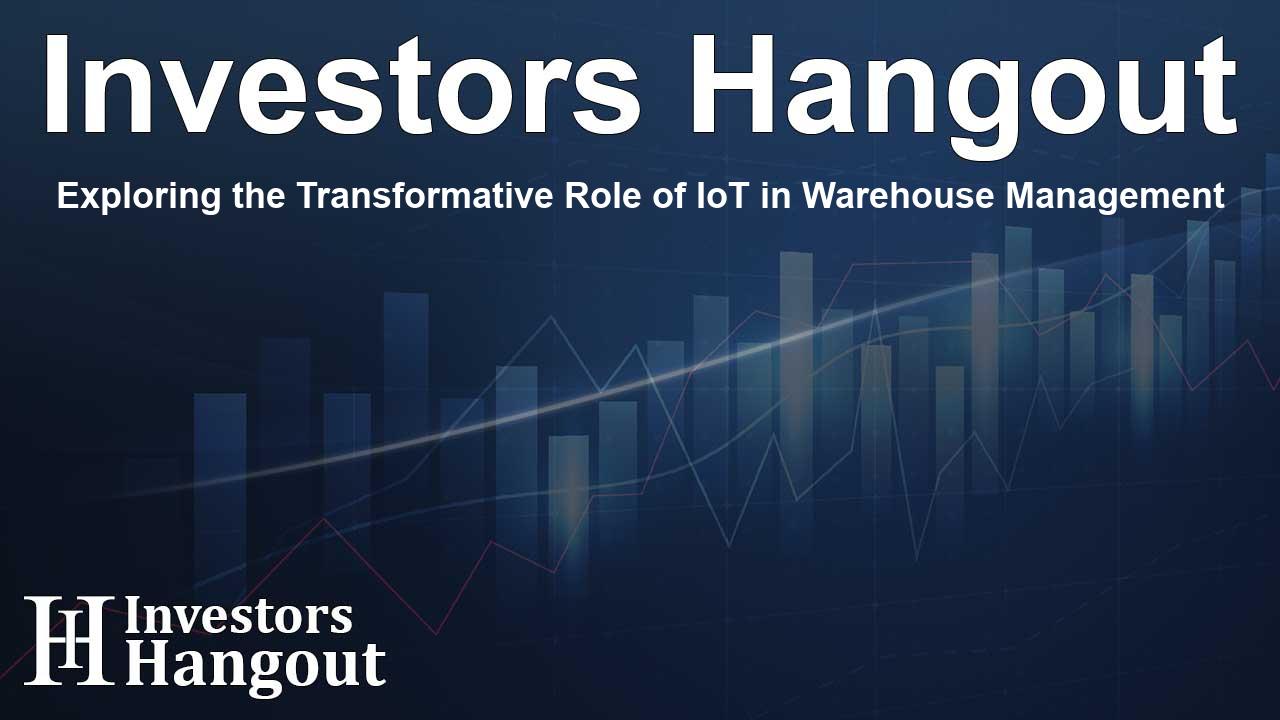Exploring the Transformative Role of IoT in Warehouse Management

Understanding IoT's Impact on Warehouse Management
The Internet of Things (IoT) technology is significantly reshaping warehouse management, driving innovation and efficiency. IoT integrates various devices and sensors into logistical frameworks, helping businesses maintain oversight of inventory and operational metrics in real time. With the market valued at USD 11.96 billion recently, industry analysts expect it to surge to USD 37.08 billion by 2032, representing an exciting 13.4% CAGR from 2024 to 2032.
Key Motivators Behind Growth
The push for automation emerges as a primary force in the IoT in warehouse management sector. Companies are turning to IoT solutions to enhance visibility and tracking within their supply chains. Real-time data from IoT devices empowers businesses to monitor stock levels, manage logistics efficiently, and make informed decisions, all of which contribute to reducing operational costs.
Rising Demand for E-Commerce Solutions
The growth of e-commerce is another factor accelerating the adoption of IoT technologies in warehouse management. More than 80% of retailers are predicted to invest in IoT innovations by 2025 to refine their order fulfillment and warehouse operations. This trend aligns with advancements in AI and machine learning, enabling predictive analytics and optimal resource management throughout the supply chain.
Major Players Leading the Market
Several prominent companies are making significant strides in this space, including Amazon Web Services with its AWS IoT Core, Microsoft’s Azure IoT Hub, and IBM’s Watson IoT Platform. These industry leaders are developing robust solutions that enhance the effectiveness of warehouse operations and contribute to substantial market growth.
Competitive Landscape
The competitive landscape consists of additional heavyweights like Siemens AG, Cisco Systems, and Honeywell, who are all focused on providing pioneering IoT solutions aimed at optimizing warehouse management. Emerging technologies like RFID and smart logistics have become essential tools for global leaders in the industry.
Market Segmentation Insights
Breaking down the IoT in warehouse management reveals significant insights into various segments. The manufacturing sector holds the largest market share, demonstrating a shift towards automation. IoT solutions enable manufacturers to track machinery health, manage inventory, and streamline supply chain operations.
Application-Based Segmentation
Within application-based segmentation, inventory optimization leads the charge, capturing about 24% of the market. IoT-enabled devices such as smart sensors are invaluable for providing real-time access to stock data, allowing businesses to better manage their resources while minimizing excess costs.
Regional Dynamics in the Market
The Asia Pacific region has positioned itself as the dominant player in the IoT in warehouse management market, accounting for 36% of the global share. Countries like China and India have invested heavily in IoT integrations to drive efficiency in their logistics, keeping pace with the growing e-commerce market.
North America's Competitive Edge
North America remains a formidable force as well, fueled by advanced technological infrastructures and a strong focus on innovation as organizations enhance their supply chain capabilities. The need for digital transformation continues to shape the market landscape, ensuring both regions play pivotal roles going forward.
Recent Advancements in IoT Technology
Recent developments suggest a continued evolution of IoT technology within warehouse management. Notable advancements include Siemens’ new IoT platform for warehouse automation, and Zebra Technologies’ innovative RFID technology designed to upgrade inventory visibility. Honeywell's AI-driven advancements to their warehouse management systems further showcase the integration of cutting-edge technology into everyday operations.
Frequently Asked Questions
What is the IoT's role in warehouse management?
IoT enhances warehouse management by providing real-time visibility and automation through interconnected devices and sensors.
How fast is the IoT in warehouse management market growing?
The market is projected to grow from USD 11.96 billion to USD 37.08 billion by 2032, reflecting a CAGR of 13.4%.
Which industries are adopting IoT solutions?
Industries such as manufacturing, retail, healthcare, and logistics are prominent adopters of IoT technologies for operational enhancements.
Who are the main players in this market?
Key players include Amazon Web Services, Microsoft, IBM, Siemens, and Honeywell, among others.
What are the future trends in IoT warehouse management?
Future trends include increased automation, enhanced data analytics, and further advancements in AI technologies to improve efficiency and reduce costs.
About Investors Hangout
Investors Hangout is a leading online stock forum for financial discussion and learning, offering a wide range of free tools and resources. It draws in traders of all levels, who exchange market knowledge, investigate trading tactics, and keep an eye on industry developments in real time. Featuring financial articles, stock message boards, quotes, charts, company profiles, and live news updates. Through cooperative learning and a wealth of informational resources, it helps users from novices creating their first portfolios to experts honing their techniques. Join Investors Hangout today: https://investorshangout.com/
Disclaimer: The content of this article is solely for general informational purposes only; it does not represent legal, financial, or investment advice. Investors Hangout does not offer financial advice; the author is not a licensed financial advisor. Consult a qualified advisor before making any financial or investment decisions based on this article. The author's interpretation of publicly available data shapes the opinions presented here; as a result, they should not be taken as advice to purchase, sell, or hold any securities mentioned or any other investments. The author does not guarantee the accuracy, completeness, or timeliness of any material, providing it "as is." Information and market conditions may change; past performance is not indicative of future outcomes. If any of the material offered here is inaccurate, please contact us for corrections.